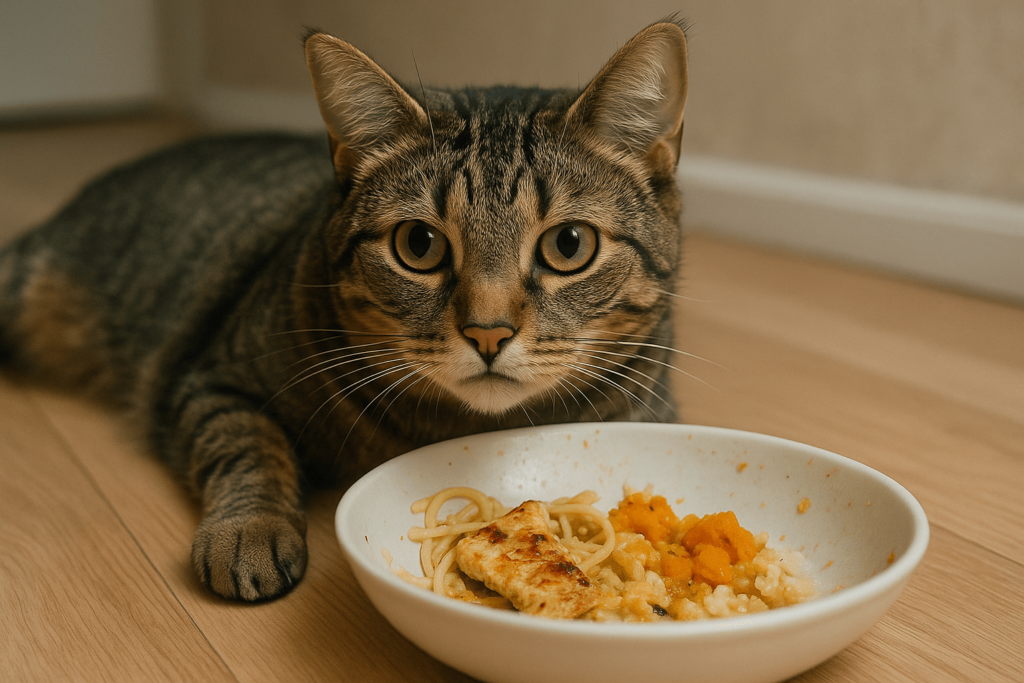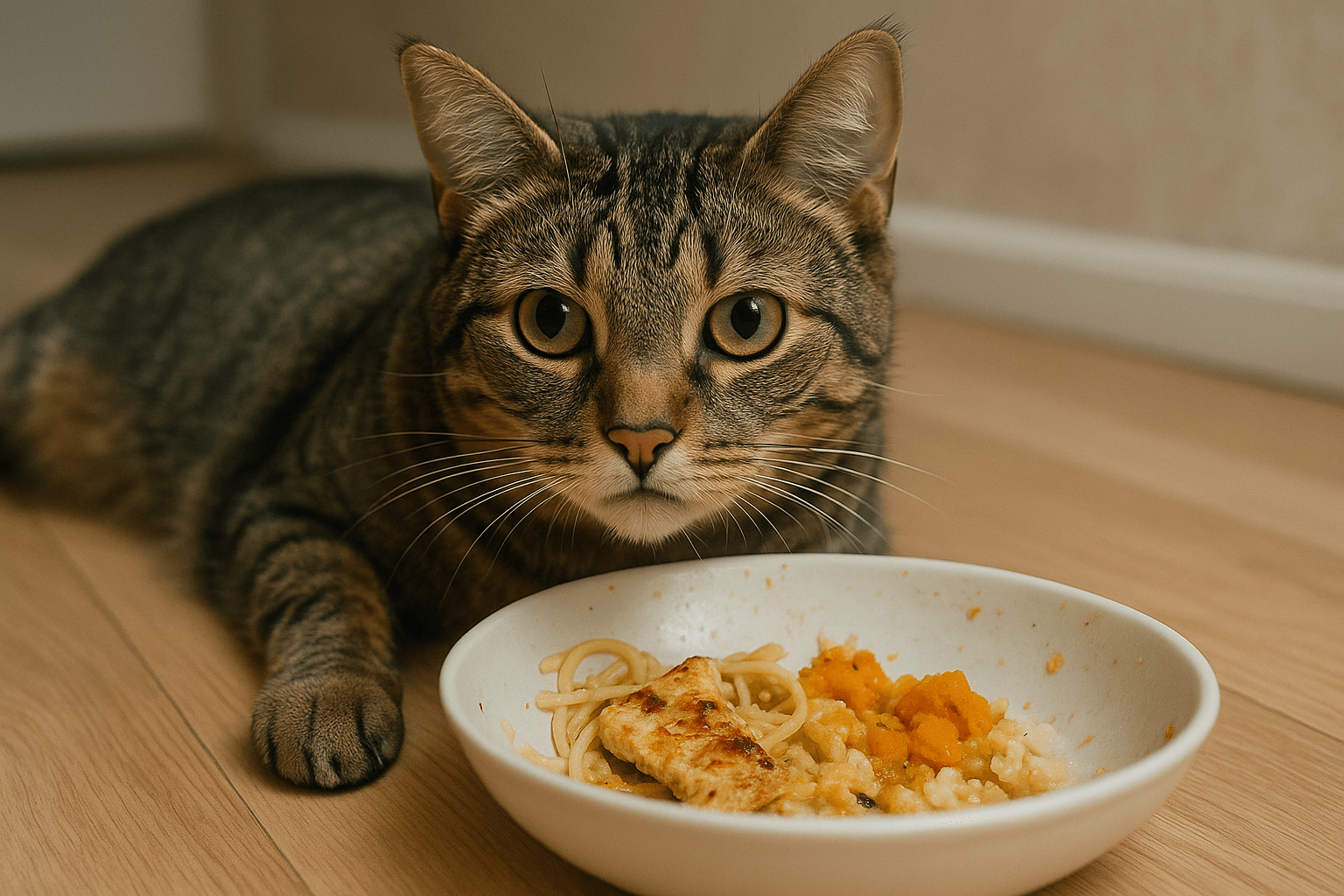Can Cats Get Food Poisoning? The Silent Danger in Their Bowl
Cats are meticulous eaters—but that doesn’t make them immune to food poisoning. What looks like a simple spoiled treat or a leftover scrap from your dinner plate could be a life-threatening event. Unlike humans, cats can’t tell you they feel ill, and their symptoms often appear suddenly and severely. Can cats get food poisoning? The answer isn’t just yes—it’s a resounding, urgent yes, and understanding how, why, and what to do can save your cat’s life.
Why Cats Are Vulnerable to Food Poisoning
Even though cats are obligate carnivores with strong stomach acids, they’re far from invincible when it comes to contaminated food. Their small size and rapid metabolism make them especially sensitive to toxins. Here’s what you need to know:
Highly Sensitive Digestive System:
A cat’s gastrointestinal tract is designed for fresh prey—not processed or aged human leftovers. Even mild bacterial growth can overwhelm it.Limited Ability to Detoxify:
Cats lack certain liver enzymes that break down toxins in humans and dogs, making them more vulnerable to substances like onion, garlic, or mold.Curiosity Over Caution:
Cats investigate food with their nose and tongue—often sampling things they shouldn’t, like spoiled meat, dairy, or table scraps.Hidden Contaminants:
Food poisoning doesn’t always come from obvious rot. Toxins from mold (aflatoxins), bacteria (Salmonella, Listeria), or chemical residues can be invisible.No Warning Signs Before Collapse:
Many cats show no discomfort until they’re already in crisis—vomiting, lethargy, or seizures can appear within hours.
A cat doesn’t need to eat something obviously rotten to get sick. Sometimes, the most dangerous meals are the ones that look perfectly normal.

Common Causes of Food Poisoning in Cats
Food poisoning in cats rarely comes from one single source—it’s often a combination of environment, diet, and oversight. Here are the most frequent culprits:
Spoiled Wet Food Left Out Too Long:
Wet food spoils in as little as 2–4 hours at room temperature. Bacteria like Clostridium and E. coli multiply rapidly.Raw or Undercooked Meat:
While some feed raw diets, unregulated meat can carry Salmonella, Listeria, or Toxoplasma gondii—all dangerous to cats and humans.Human Leftovers with Toxic Ingredients:
Onions, garlic, chives, grapes, raisins, chocolate, and xylitol are common in human meals but deadly to cats—even in tiny amounts.Contaminated Commercial Pet Food:
Recalls happen. Mold, bacteria, or chemical contaminants in kibble or canned food can cause widespread illness.Eating from the Trash or Outdoor Sources:
Rotting meat, spoiled fish, or decaying plants found outside can contain deadly pathogens or poisons.
Your cat doesn’t need to scavenge to be at risk. Sometimes, the safest meal is the one you never intended to share.
Check this guide 👉Signs of Plant Poisoning in Cats: Best 7 Expert Tips!
Check this guide 👉Is Cyclamen Poisonous to Cats? Best 7 Expert Tips!
Check this guide 👉Rat Poisoning in Cats: Best 7 Expert Tips!
| Source of Contamination | Risks and Effects |
|---|---|
| Spoiled wet food (left >4 hours) | Bacterial overgrowth → vomiting, diarrhea, dehydration, sepsis |
| Raw chicken or fish | Salmonella, E. coli, parasites → fever, lethargy, bloody stool |
| Leftovers with onions/garlic | Red blood cell damage → anemia, weakness, pale gums |
| Moldy bread or cheese | Aflatoxins → liver failure, seizures, death within 24–48 hours |
| Recalled commercial pet food | Widespread illness → kidney failure, neurological symptoms, death |
Symptoms of Food Poisoning in Cats: Don’t Wait for the Obvious
Cats are masters of hiding illness. By the time they look visibly sick, the damage may already be severe. Recognizing subtle signs early is critical.
Sudden Loss of Appetite:
One of the earliest and most reliable indicators. If your cat turns away from their favorite food, something is wrong.Excessive Drooling or Lip Licking:
This often signals nausea or oral discomfort from stomach irritation or toxin exposure.Vomiting or Diarrhea with Blood:
Not just “upset stomach”—bloody stool or vomit indicates internal damage or infection.Lethargy or Hiding:
A cat who retreats to a dark corner and won’t interact is signaling profound discomfort or systemic illness.Fever, Rapid Breathing, or Weakness:
These are emergency signs. A fever over 103°F (39.4°C) means the body is fighting a serious infection.
If you notice even one of these symptoms after your cat ate something unusual, don’t wait. Time is the most critical factor in recovery.
What to Do If You Suspect Food Poisoning
Immediate action can mean the difference between life and death. Here’s your step-by-step response:
Remove All Food and Water Temporarily:
Stop offering anything for 2–4 hours to let the stomach settle—unless your vet advises otherwise.Do NOT Induce Vomiting:
Unlike dogs, cats cannot safely vomit on command. Forcing it can cause aspiration or esophageal injury.Collect Evidence:
Save the food container, packaging, or leftovers. Note the time eaten and symptoms started. This helps your vet identify the toxin.Call Your Veterinarian Immediately:
Even if symptoms seem mild. Many toxins have delayed effects. Early intervention saves lives.Avoid Home Remedies:
Baking soda, charcoal, or human medications can be toxic to cats. Never administer anything without veterinary guidance.
Your calm, decisive response in the first few hours is your cat’s best chance.
How Veterinarians Diagnose and Treat Food Poisoning
Your vet won’t guess—they’ll investigate. Diagnosis involves a combination of clinical signs, history, and testing.
Physical Exam:
Checks for dehydration, fever, abdominal pain, gum color, and heart rate.Bloodwork and Urinalysis:
Identifies organ damage, infection markers, and electrolyte imbalances.Fecal Testing:
Looks for parasites, bacteria, or toxins in the digestive tract.Toxin Screening:
Specialized tests for lilies, xylitol, heavy metals, or mycotoxins if suspected.Imaging (X-rays/Ultrasound):
Used if obstruction, pancreatitis, or foreign body is suspected.
Treatment may include IV fluids, anti-nausea medication, antibiotics, activated charcoal, or hospitalization. Recovery depends on early detection and the type of toxin involved.
Preventing Food Poisoning: Simple, Lifesaving Habits
You can’t control everything—but you can control what’s in your cat’s bowl. Prevention is always better than cure.
Store Wet Food Properly:
Refrigerate opened cans within 1 hour. Discard uneaten food after 4 hours at room temperature.Avoid Human Food Entirely:
Even “safe” items like plain chicken can be contaminated. Stick to cat-specific diets.Check Pet Food Recalls Weekly:
Subscribe to FDA or AAFCO recall alerts. Brands change suppliers—don’t assume safety.Secure Trash and Compost:
Use lidded bins cats can’t access. Rotting food is a magnet for curious felines.Keep Toxic Foods Out of Reach:
Chocolate, onions, grapes, coffee, alcohol, and artificial sweeteners should be stored in locked cabinets.
A few minutes of vigilance today prevents a frantic midnight vet visit tomorrow.
High-Risk Cats: Who Needs Extra Caution?
Not all cats are equally vulnerable. Some are at significantly higher risk—and require stricter safeguards.
Kittens Under 6 Months:
Immature immune systems can’t fight off bacteria or toxins effectively.Senior Cats (Over 10 Years):
Reduced liver/kidney function makes detoxification harder.Cats with Chronic Illness:
Diabetes, kidney disease, or hyperthyroidism weaken natural defenses.Immunocompromised Cats:
Those on steroids, chemotherapy, or recovering from surgery.Outdoor or Stray Cats:
More exposure to decaying prey, garbage, and contaminated water sources.
If your cat falls into any of these categories, treat their food like medicine—precise, sterile, and strictly controlled.
FAQ: Can Cats Get Food Poisoning?
Can my cat get food poisoning from dry kibble?
Yes. While less common, dry food can become contaminated with mold (aflatoxins) or bacteria during storage or manufacturing. Always check recall notices.
How quickly do symptoms appear after eating spoiled food?
Symptoms can appear within 2–6 hours, or up to 24–48 hours depending on the toxin. Don’t wait—act at the first sign.
Is it safe to feed my cat raw meat?
Raw diets carry high risks of bacterial contamination and parasitic infection. If you choose this route, use veterinary-grade, frozen, pathogen-tested meat—and never feed raw poultry or pork.
Can cats get food poisoning from milk?
Not technically food poisoning—but most adult cats are lactose intolerant. Milk can cause severe diarrhea and dehydration, mimicking poisoning symptoms.
What if my cat only ate a tiny bit of chocolate?
Even a small piece can be fatal. Chocolate contains theobromine, which cats cannot metabolize. Call your vet immediately—even if they seem fine.
Respect Their Instincts—But Protect Them From Themselves
Cats are born hunters, scavengers, and explorers. Their curiosity is part of their charm. But in our modern homes—with refrigerators, leftovers, and packaged foods—those instincts can turn deadly.
Can cats get food poisoning? Absolutely. And it doesn’t always come with a warning.
The quiet cat who won’t eat. The sudden limpness. The vomiting in the middle of the night. These aren’t accidents. They’re cries for help.
Canned Pumpkin for Cat Diarrhea: Best 7 Expert Tips! Natural remedy to firm stools, soothe upset bellies, and support gut health safely.
Can a Cat Give You Scabies? Best 7 Expert Tips! Discover the truth about feline mites, human skin risks, and how to protect yourself—without panic.
Cat Flea vs Human Flea: Best 7 Expert Tips! Discover the truth about bites, species, and how to eliminate infestations for good.
Weird Cat Behaviors: Best 7 Expert Tips! Discover why cats do strange things—and how to understand, not punish, their instincts for a happier home.





